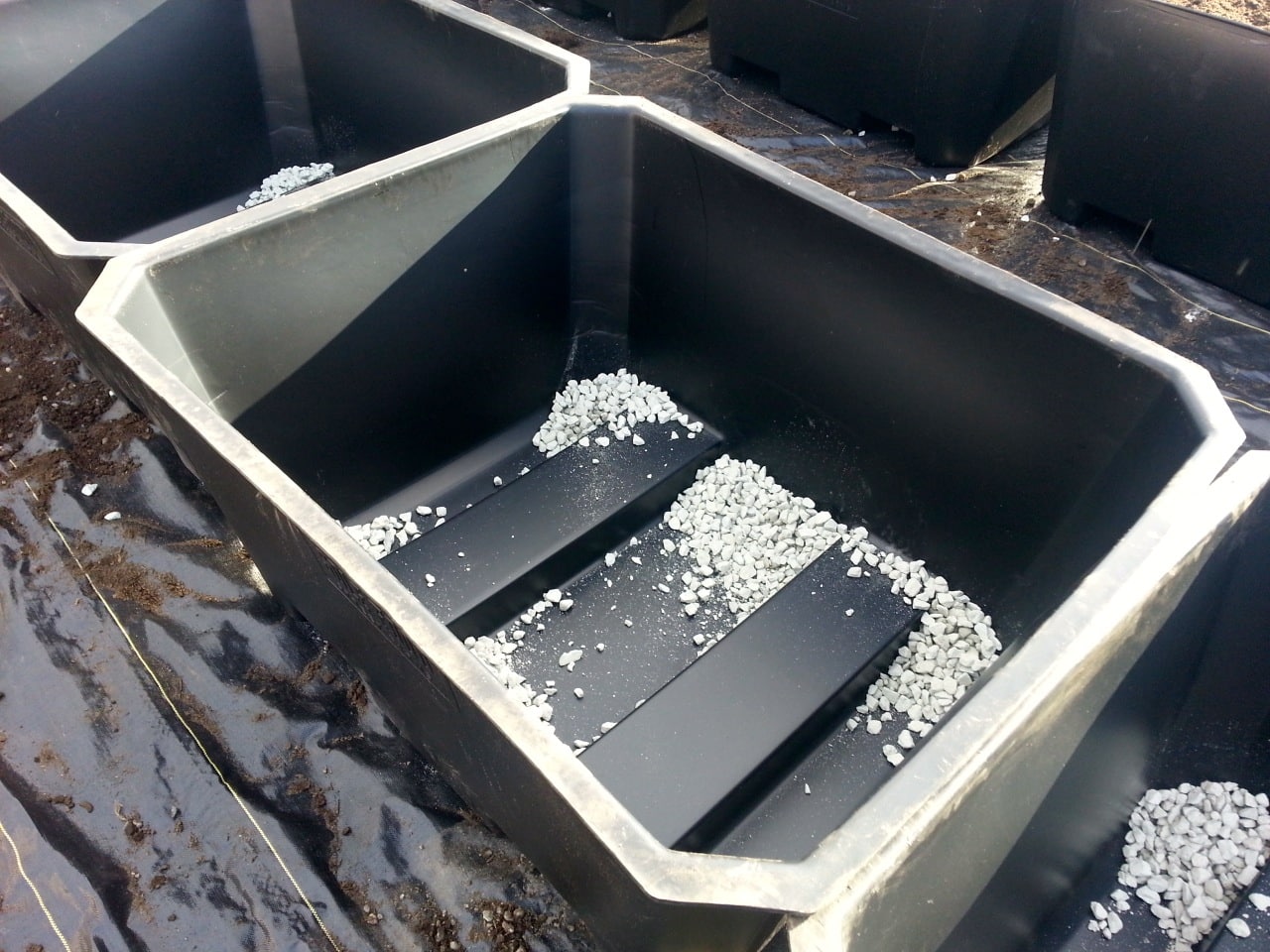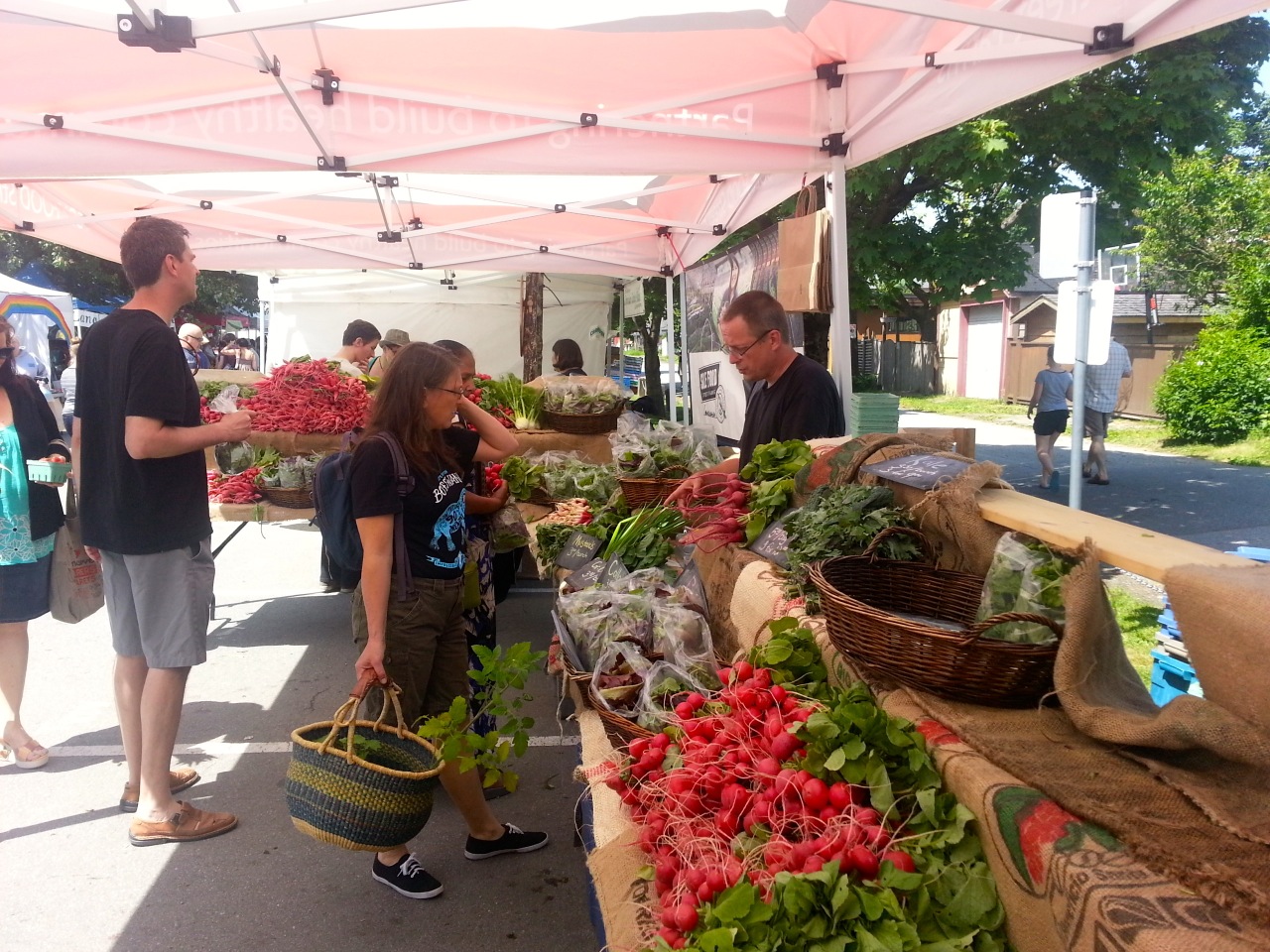
Sole Food Farm is an urban farming project in Vancouver. With a firm focus on intensive, chemical-free food production, it knocks most other urban farming setups we’ve seen for six. And the best part? It’s entirely portable.
Why is portable important? Because it effectively gets around the problem of land tenure: that biggest of stumbling blocks for would-be urban farmers.

Seann + Michael – photo courtesy Solefood
Sole Food was set up by Seann Dory and Michael Ableman, a community cultivator and an expert market gardener respectively. Their mission? To provide livelihoods for locals by growing nutrient dense, chemical free, hyper local food. Right in the middle of the city.
Their plan: “To empower individuals with limited resources by providing jobs, agricultural training and inclusion in a supportive community of farmers and food lovers.
We envision a future where small farms thrive in every neighbourhood, where good food is accessible to all, and where everyone participates in the process.
Sole Food is helping to fulfil this vision by marrying innovative farming methods with concrete social goals. “ – Michael Ableman | Co-Founder/Director

New planted beds and berries

Veggies thriving in the original portable planters…

And the future planters for Sole Food – custom-made, forklift ready, uv stable planters.

New orchard section of Sole Food going in for city fruit production…

Serious production levels here…
The portability of the Sole Food growing model has been a big part of it’s success, even though they have not yet been moved on from any of the vacant lots that they’ve transformed.
This is because the deal with land owners is a relatively simple one. The owner rents their vacant lot, on a short lease, with access to a water point as part of the deal. And that’s it.
Ground contamination concerns? None. It’s all above-ground, contained growing. Intricate exit strategies, should the lease fall apart? Not needed. Ableman rekons they could clear the place in no more than 48 hours, if they had to.
Access to land is a common theme for new growers, no matter where they are. So renting and leasing land is often a pathway to get growing. But what when you literally need to put down roots to do it?
This kind of setup could well be the answer. Yes, there’s infrastructure costs, and startup capital needed. But it’s the fastest path to enabling serious urban food production that we’ve seen so far, and its portability makes is a safer bet than many alternatives.
Another great thing that we like about the Sole Food model is its focus on production, and its overall system design that enables this central goal.
To put it bluntly, our cities need far, far more food than they currently contain. Yes, even taking into consideration all our awesome edible balcony gardens, our verge silverbeet strips, our backyard patches and our patio pots.
While all these little gardens are great, and necessary, and needful, Sydney currently consumes a vast quantity of food each day (I have a remembered figure of 1,500 semi-trailers of fruit & veg per day for Sydney, but if that’s not right I’d love to be corrected).
Facilitating urban growing projects that focus on chemical-free, nutrient dense food production at a commercial level is going to be a big part of our city futures. It has to be.
And so the aesthetic beauty that comes with these systems is a byproduct. But no less beautiful for that.


Sole Food at the markets (these photos were taken late in the morning when the bulk of stock was already sold)

Yay Seann! Co-founder and market stall manager both… What a trooper…
Sole Food sells its produce via farm shares (a weekly box of veg) and at various local city farmers markets, as well as supplying the families who participate in the growing. This might just be serious city food at its best.
A model like Sole Food does, of course, require a certain amount of fossil-fuel inputs to get going and maintain: forklifts, trucks of soil (until you get your composting regime up and happening), plastic buckets and all the rest.
But what’s our current alternative, for 99% of the food that Sydney eats in any given day?
Food with huge embodied energy, brought in from far away, by a big truck. Or, by ship, from the other side of our globe. We can all do the footprint and food security math on that one…
So Sydney… what are we waiting for? Methinks it’s time to adapt this model as needed for our biosphere, and get growing…
>> More posts on growing good food in the city…
Big thanks to Olivier Sofo, Michael Ableman, Seann Dory and all the rest of the Sole Food / Foxglove Farm crew. Keep going guys, you’re awesome.













Wonder whether above ground tubs would necessarily work in hotter climates…say the hot arid Southwest in the US? Above ground containers here just tend to heat up too much, at least in a small scale patio scenario without additional shade or artificial misting all the time. At least they would have to be painted white. (Also see http://www.Globalbuckets.org, an initiative by two teenagers in Colorado, which can get hot, but not quite as hot as Arizona, Texas etc.)
Reblogged this on wildlettucegal's Blog and commented:
This is incredibly inspiring and a great idea that’s proven to work! Portable organic farming increases access without necessitating land ownership.
Do they have links to an urban composting scheme to replenish the beds? Also the water consumption must be enormous.
Yep they do have a big composting setup, and it’s vancouver, so the humidity and rainfall are big assets there. That said, any commercial-scale vegetable growing takes a fair bit of water to run, no matter where it is…
I love that there is a maccas sign in the background of photo showing soon to be installed orhard! Subvertting the beast right under its nose!!
I love this idea! You all should check out garden towers too–similar idea for people without space that combines the compost (with worms!) and garden in a small space that just about anyone can use.
i applaud and envy your work. My biggest concern is cost. The fork lift uv crates are not cheap, and wonder if you can ever break even. This is something that is looked at when your budget just won’t cover these supplies. Would like to be able to follow this story as you expand and if possible to learn your methods on growing.
luke
Yep, that’s true. These custom-made boxes are far from being the only option, however. There’s many other designs made from scrap, IBC’s etc that could be used…
Thanks for sharing. This is awesome to see, and I can envision setups like this being successful in the area that I live, the South Jersey/Philadelphia area of the US.
I just found out about a similar idea, although still in a much earlier stage of development, that a friend of mine is working on in Perth, called Green World Revolution (http://gwr.org.au/). I don’t know the specifics of their setup, but I guess it must be feasible to use container-based systems in an arid tending environment, because we definitely have one over here.
That is VERY cool, what an inspiring set up.
I am a building designer student at Granville Tafe and for our advanced Diploma class we are retro designing the Tafe with ideas just like soul food. We are looking at accommodation options as well as on camp energy generation.
So I would like to see more of this happening throughout all cities, since the urban sprawl is consuming most of what used to be farms and dairy and food production areas, such as Cowpasture Rd. etc…
So keep on spreading the word, we may be at a tipping point in our evolution.
Cheers
Glenn
I have a giant rooftop in Marrickville if anyone wants to join me in see if we can set something like this up!
Just how giant are we talking, Tabitha? 🙂
Well the building is 36 units and most of the roof is empty space with just a few washing lines. I can get measurements if you wish Kirstin. Pretty open/supportive/green owners committee. I reckon that if they were sure it wouldn’t damage the roof membrane and would add value, they would be open to something like this.
We also started urban farming at our garden. With that, our family managed to establish a small catering business. Urban farming really benefited us. It made us appreciate farming more and also gave us a healthier lifestyle.
Reblogged this on FarmTECH 2013.